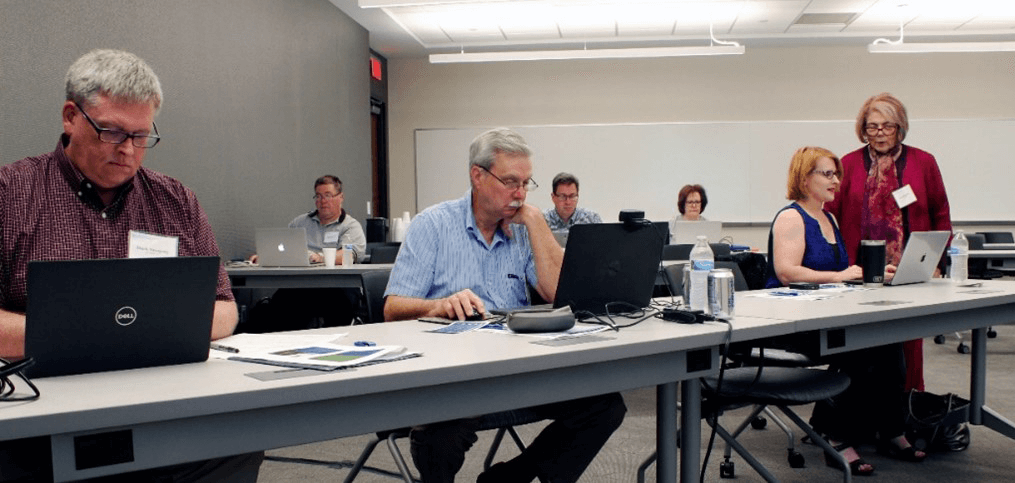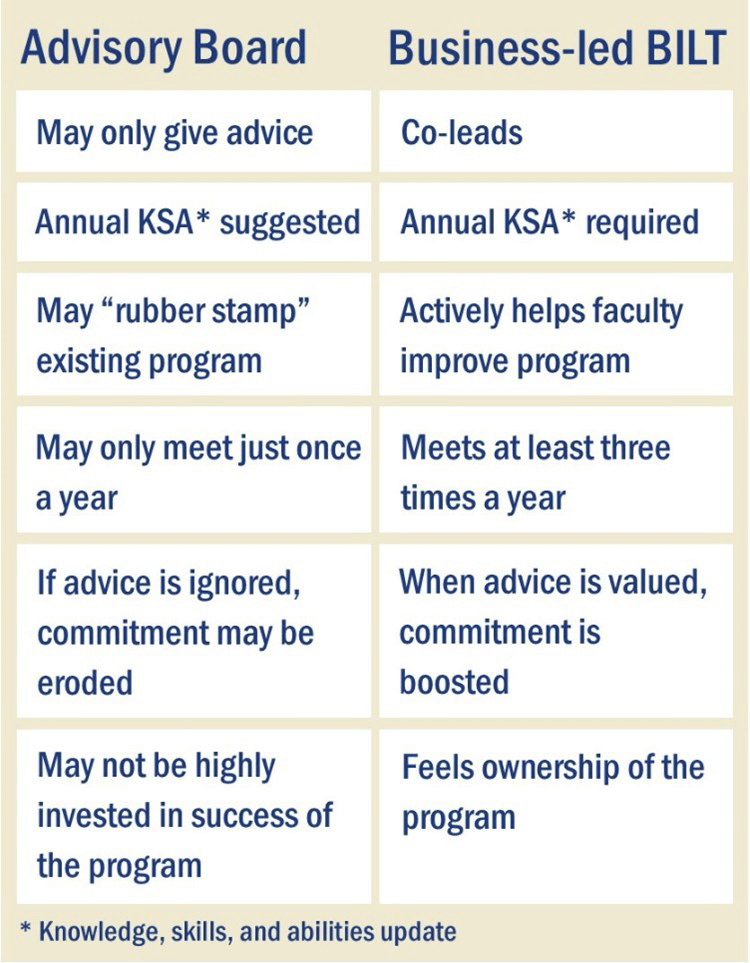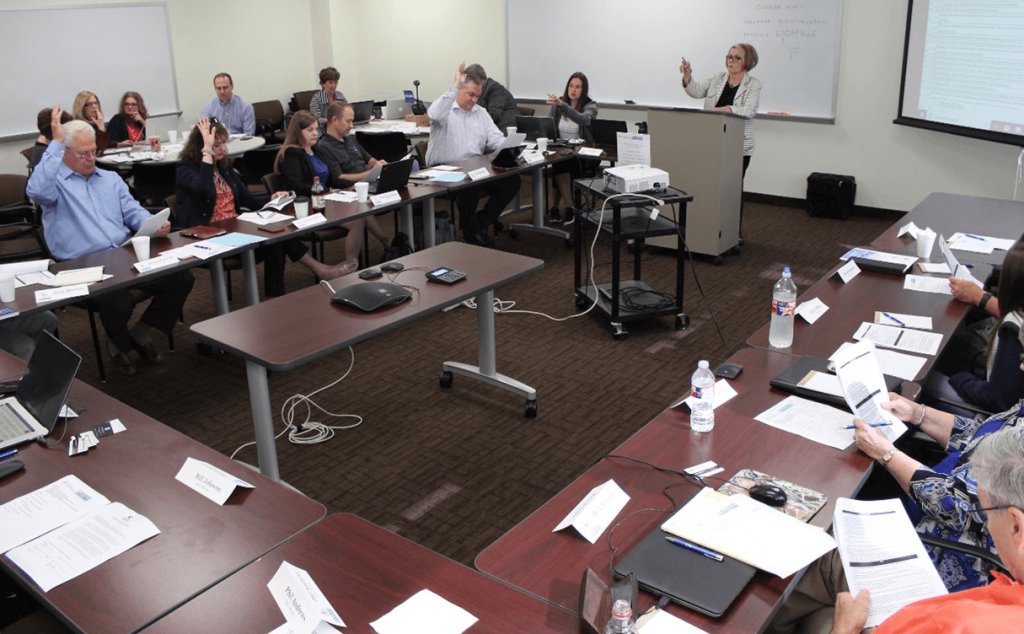Pathway Perspectives
The online journal of the National Career Pathways Network
Employer Strategies for Managing Successful Employer Councils

Ann Beheler
Director of Innovation, CORD

Mark Dempsey
National Convergence Technology Center, Collin College
Everyone can agree that two major goals for all technical programs are to help students complete certificates and degrees that will make them highly employable and to engage with local employers in a way that inspires ongoing support and involvement. Many institutions rely on traditional business advisory councils, which often feature annual meetings in which faculty present courses they want to teach and the employers smile and provide a rubber stamp approval. Even business advisory councils that are more substantive meet only twice a year and talk about industry needs through winding conversations and debates that provide limited actionable results. But there is a process that creates deeper connections between educators and employers and provides more useful feedback on workforce needs in an efficient manner. That process—developed by the National Convergence Technology Center (funded by a National Science Foundation grant) at Collin College—is called the Business and Industry Leadership Team (BILT) model.

Think of the BILT as a business advisory council on steroids, whereby employers are co-leading the program and ensuring curriculum delivers the skills they need in new hires 12–36 months into the future. The BILT model is flexible and scalable. It can work on a single program, an entire college, or a regional group—and for any technical discipline. The BILT model’s deeper engagement is a win-win. Businesses connect with a pipeline of workforce-ready job candidates, faculty teach with the assurance that the curriculum aligns with workforce needs, students benefit from “first in line” opportunities for job openings and internships, and programs develop a pool of supportive industry experts. The table below illustrates some differences between typical advisory councils and BILTs.


The BILT model has seven essential elements:
1. Convene regularly. BILTs should meet at least three times a year (spring, summer, fall), preferably quarterly. Frequent engagement promotes deeper relationships. Meetings can be in person or via Zoom or a hybrid.
2. Discuss trends. Employers share their perspectives on industry trends three or more years into the future. Too often business advisory councils are powered by faculty agendas. Let the businesses speak so they can better inform educators on what’s coming in the workforce.
3. Invite faculty. Faculty must be present at the BILT meetings so they can hear directly from employers.
4. Conduct an annual vote. The cornerstone of the BILT model is an annual, line-by-line prioritization of granular entry-level job skills (specifically, knowledge, skills, and abilities, or KSAs). Voting is done online and automatically tallied on a spreadsheet, which then fuels industry discussion. This KSA vote is always “future-facing.” That is, employers consider the entry-level skill they will need 12–36 months into the future to allow time for curriculum changes. Free Google tools are used to facilitate this vote. Learn more about the voting process by watching this 10-minute video.
5. Map the KSA results. After the BILT prioritizes the entry-level skills, the faculty use that spreadsheet to make sure that needs identified by the BILT are indeed being covered in the classroom. They determine which KSAs are covered by existing courses and at what level, and which ones are not covered. Where there are gaps, the faculty can create new courses or update existing courses.
6. Provide feedback to close the loop. Part of building a relationship with employers is making sure the BILT feels heard and valued. Be sure to update the BILT on what you’ve done with their recommendations and how you’ve made changes. And if you can’t do what they asked, explain why. Sometimes BILT members can help find solutions.
7. Group employers by subject matter expertise. Leverage the know-how of your employers in their specific disciplines. It’s fine to convene your entire program BILT for broader program discussions and trends talks. But when it’s time to drill down and prioritize entry-level KSAs, you should consider convening just the BILT members who are subject matter experts in that specific area. You can’t expect, for example, networking experts to be able to prioritize job skills in programming.

The BILT model has been adopted by close to 100 institutions nationally, and several have implemented it across multiple workforce programs. Its impact is almost immediate. Educators and employers alike quickly notice a stronger relationship and more useful outcomes. Additionally, the BILT model has been recognized by the National Science Foundation, the Department of Education, and the Department of Labor as an effective process for successfully engaging employers and keeping technical programs current.
Contact the authors at abeheler@gmail.com and mdempsey@collin.edu.


